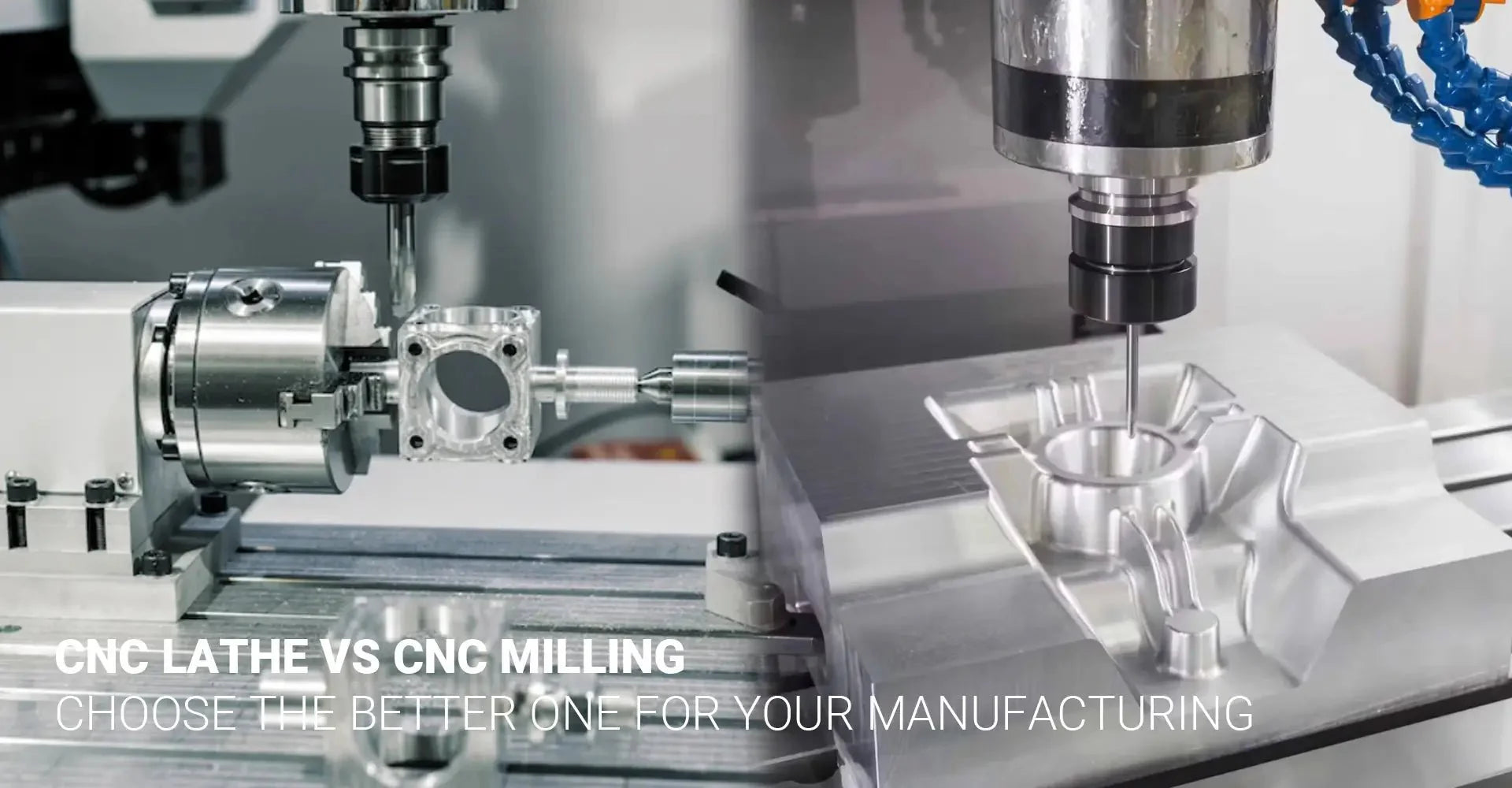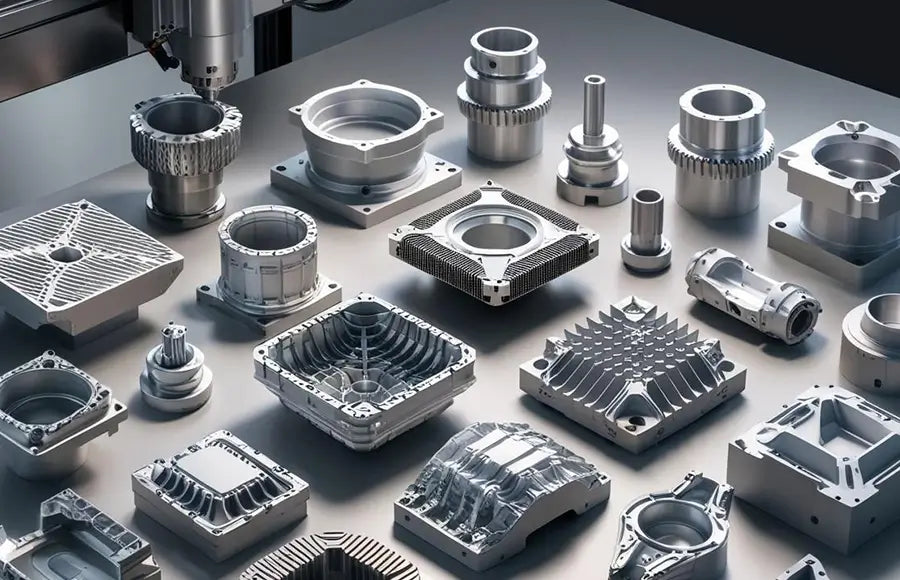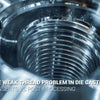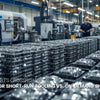Which is Better for Your Manufacturing Needs: CNC Lathe or CNC Milling?

![]() Which is Better for Your Manufacturing Needs: CNC Lathe or CNC Milling?
Which is Better for Your Manufacturing Needs: CNC Lathe or CNC Milling?

When it comes to precision manufacturing, choosing between CNC lathe and milling machines can significantly impact your project's success. These two cornerstone technologies of modern manufacturing each bring unique capabilities and advantages to different applications.
Many manufacturers struggle with selecting the right CNC machining process for their specific needs. This comprehensive guide breaks down the key differences, applications, and cost considerations to help you make an informed decision.
Before diving into the details, it's important to understand that both technologies excel in different scenarios, and sometimes using both might be the optimal solution for complex manufacturing projects.
[Table of Contents]
- Key Differences Between CNC Lathe and CNC Milling: A Practical Guide?
- When Should You Choose CNC Lathe Over CNC Milling?
- What Makes CNC Milling Stand Out in Modern Manufacturing?
- How Do Operating Costs Compare Between CNC Lathe and Milling?
Key Differences Between CNC Lathe and CNC Milling: A Practical Guide?
The fundamental distinction between these technologies lies in their approach to material removal. CNC lathes rotate the workpiece while holding cutting tools stationary, while CNC mills do the opposite, moving cutting tools around a stationary workpiece.
This core difference affects everything from surface finish quality to production capabilities. CNC lathes excel at creating perfectly symmetrical parts, while milling machines offer superior versatility for complex geometric shapes.
Understanding these mechanical differences is crucial for optimizing your manufacturing process. Lathes typically achieve better concentricity and cylindrical accuracy, while mills provide greater flexibility in creating varied surface features and complex patterns.
When Should You Choose CNC Lathe Over CNC Milling?
In industrial machinery manufacturing, CNC lathes prove invaluable for producing cylindrical components with high precision. Their specialized design makes them particularly effective for creating shafts, pulleys, and other rotational parts.
A key advantage of CNC lathes is their exceptional speed in material removal for cylindrical parts. When working with bar stock or tubular materials, lathes can achieve material removal rates up to 40% faster than milling machines for similar operations. This efficiency translates directly to reduced production times and lower per-part costs.
The automotive industry heavily relies on CNC lathes for producing precision components like axles, pistons, and brake rotors. These parts require the exceptional roundness and concentricity that only a lathe can consistently deliver.
Common materials perfectly suited for CNC lathe operations include:
- Stainless steel for medical devices
- Aluminum for aerospace components
- Brass for plumbing fixtures
- Tool steel for industrial equipment
- Plastics for consumer products

Lathes demonstrate superior efficiency when working with cylindrical parts, offering faster production times and often better surface finishes for round components. Modern CNC lathes can achieve surface roughness values as low as 0.4 Ra (micrometers), making them ideal for high-precision applications where surface quality is crucial.
What Makes CNC Milling Stand Out in Modern Manufacturing?
Custom CNC milling services excel in creating complex geometric shapes and patterns that would be impossible with a lathe. This versatility makes milling machines essential for industries requiring intricate components.
Modern 5-axis milling centers offer unprecedented capabilities:
- Simultaneous 5-axis machining for complex contours
- Reduced setup time with single-operation processing
- Enhanced surface finish quality
- Improved tool life through optimal cutting angles
- Reduced cycle times for complex parts
In the electronics manufacturing sector, CNC milling machines are crucial for producing precise housings, heat sinks, and custom components that require complex pocket features and multiple surface manipulations.
The aerospace industry particularly benefits from CNC milling's capabilities:
- Production of lightweight structural components
- Creation of complex cooling channels in engine components
- Manufacturing of precision landing gear components
- Fabrication of intricate turbine blade geometries

Modern multi-axis CNC milling centers can create increasingly complex parts with features on multiple faces in a single setup, significantly reducing production time and improving accuracy. Advanced tool management systems and automated tool changers can handle hundreds of different cutting tools, enabling the production of highly complex parts without manual intervention.
How Do Operating Costs Compare Between CNC Lathe and Milling?
Initial investment costs typically favor CNC lathes, with basic models starting at lower price points compared to equivalent milling machines. Here's a detailed breakdown of cost considerations:
Equipment Costs:
- Basic CNC Lathe: $30,000 - $80,000
- Entry-level CNC Mill: $45,000 - $100,000
- Advanced 5-axis Mill: $150,000 - $500,000
- Multi-axis Lathe: $100,000 - $300,000
Operating Expenses:
- Tooling Costs
- Lathe: Average annual tooling cost $5,000 - $15,000
- Mill: Average annual tooling cost $8,000 - $25,000
- Maintenance Requirements
- Lathe: 2-4% of machine cost annually
- Mill: 3-5% of machine cost annually
- Energy Consumption
- Lathe: 8-15 kW/hour average
- Mill: 10-20 kW/hour average
The global CNC machinery market's projected growth to $130.1 billion by 2032 reflects increasing demand for both technologies, with each showing strong return on investment potential in different applications.
While milling machines often require higher initial investment and more diverse tooling options, their versatility can justify the cost for operations requiring varied part production capabilities. Additionally, modern hybrid machines combining both milling and turning capabilities are becoming increasingly popular, offering the best of both worlds for shops with diverse production needs.
Training and operator costs also factor into the equation:
- CNC lathe operators typically require 3-6 months of training
- CNC mill operators often need 6-12 months of training for complex operations
- Combined training programs for hybrid machines may take 12-18 months
Conclusion
The choice between CNC lathe and milling ultimately depends on your specific manufacturing requirements. Lathes offer superior efficiency for cylindrical parts, while milling provides unmatched versatility for complex geometries.
Consider these key factors when making your decision:
- Part geometry and complexity requirements
- Production volume needs
- Surface finish requirements
- Budget constraints
- Industry-specific standards
[External Links Recommendation]
-
[CNC machining process](https://astromachineworks.com/what-is-cnc-machining/)[^1]
---
[^1]: Understanding the CNC machining process is crucial for optimizing manufacturing efficiency and product quality.
-
[CNC lathe vs CNC milling](https://phillipscorp.com/india/difference-between-cnc-latheand-cnc-milling/)[^2]
---
[^2]: Exploring the differences between CNC lathe and CNC milling helps in selecting the right machining process for specific projects.
- [Surface finish](https://www.hubs.com/knowledge-base/surface-finishes-cnc-machinings/)[^3]
---
[^3]: Learning about surface finish in CNC machining is essential for achieving the desired aesthetic and functional properties of machined parts.
-
[CNC milling for automotive industry](https://www.3erp.com/blog/applications-cnc-machining-automotive-industry/)[^4]
---
[^4]: Explore the critical role of CNC milling in the automotive industry for producing durable and precise components.
-
Posted in
CNC lathe, CNC milling





